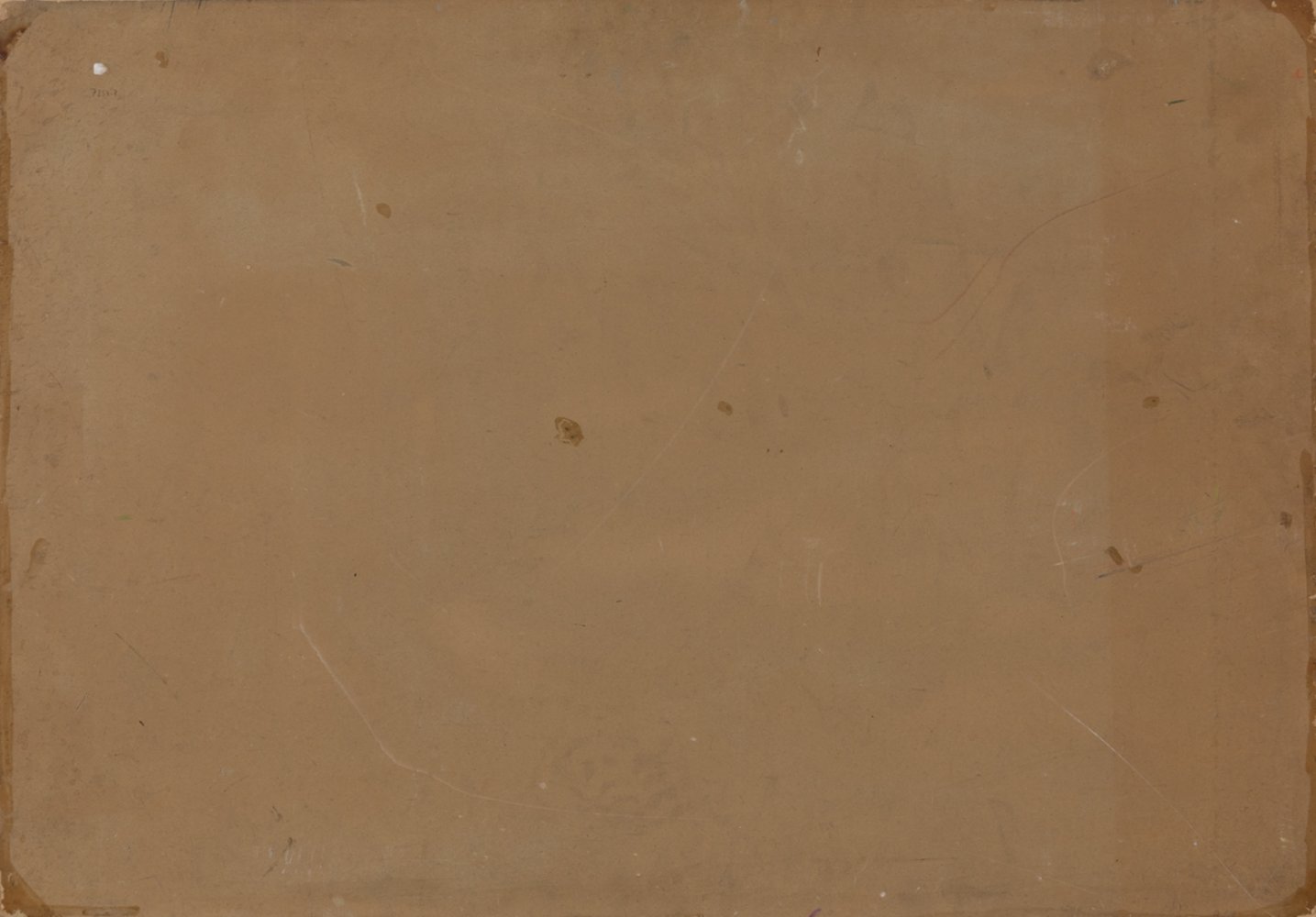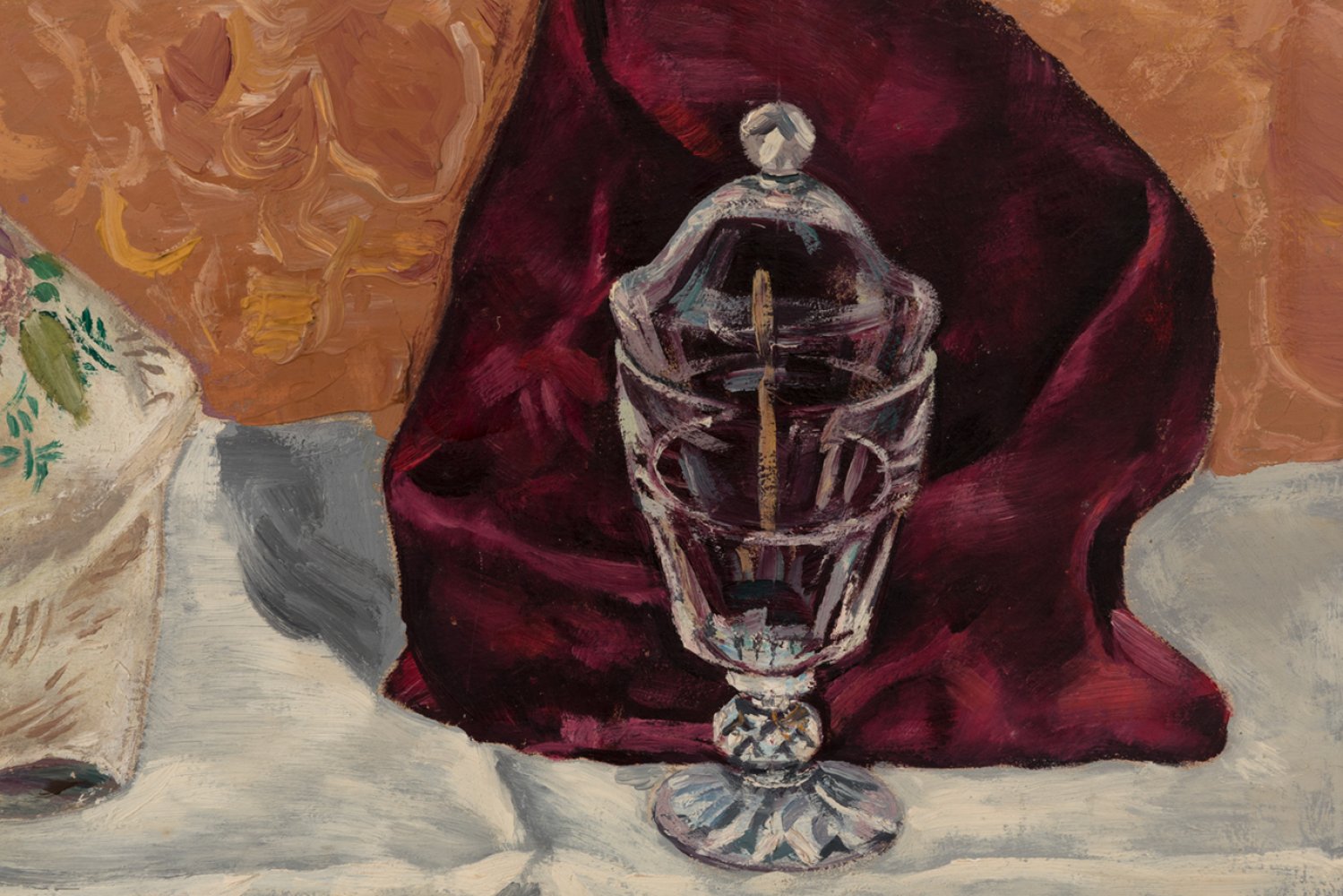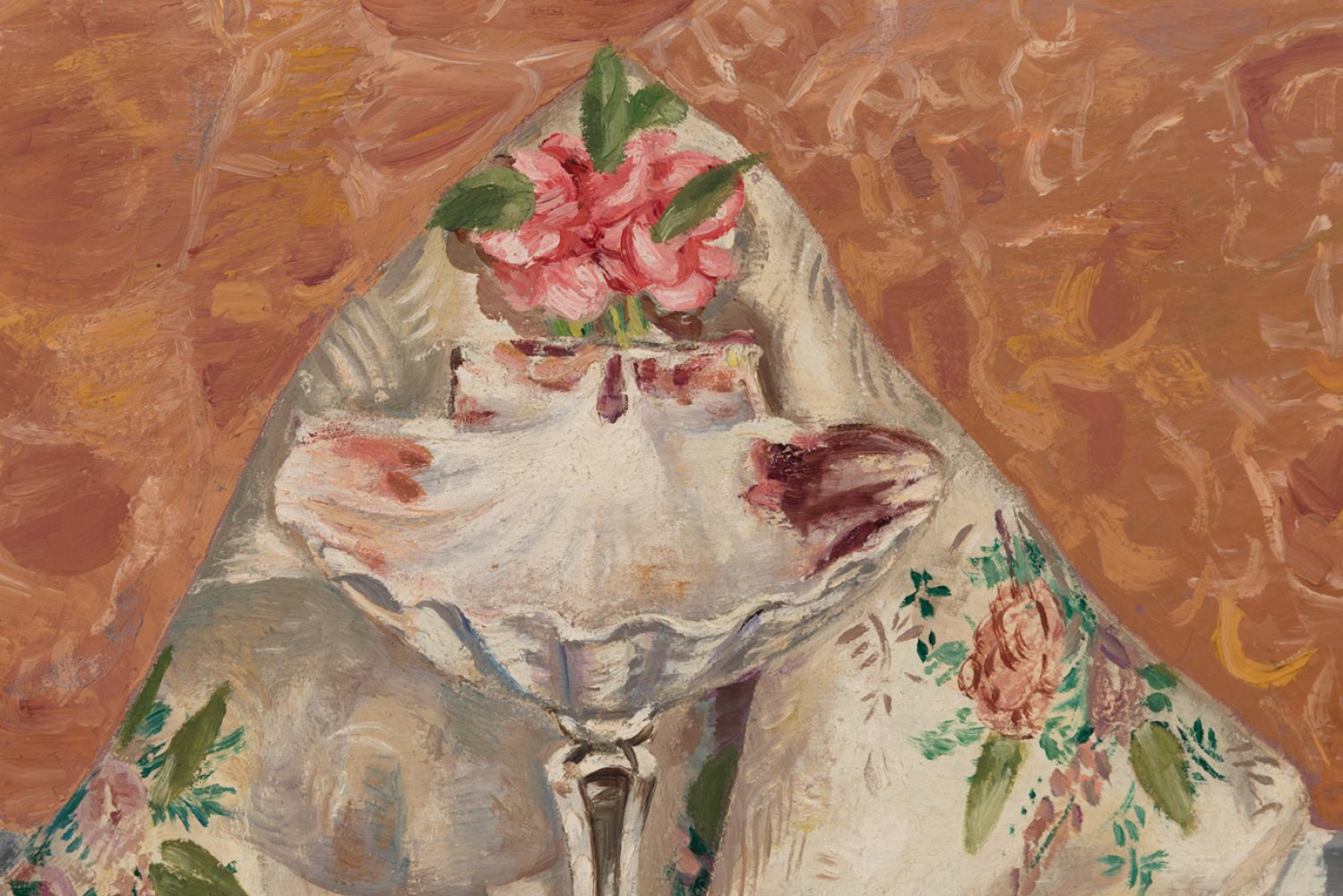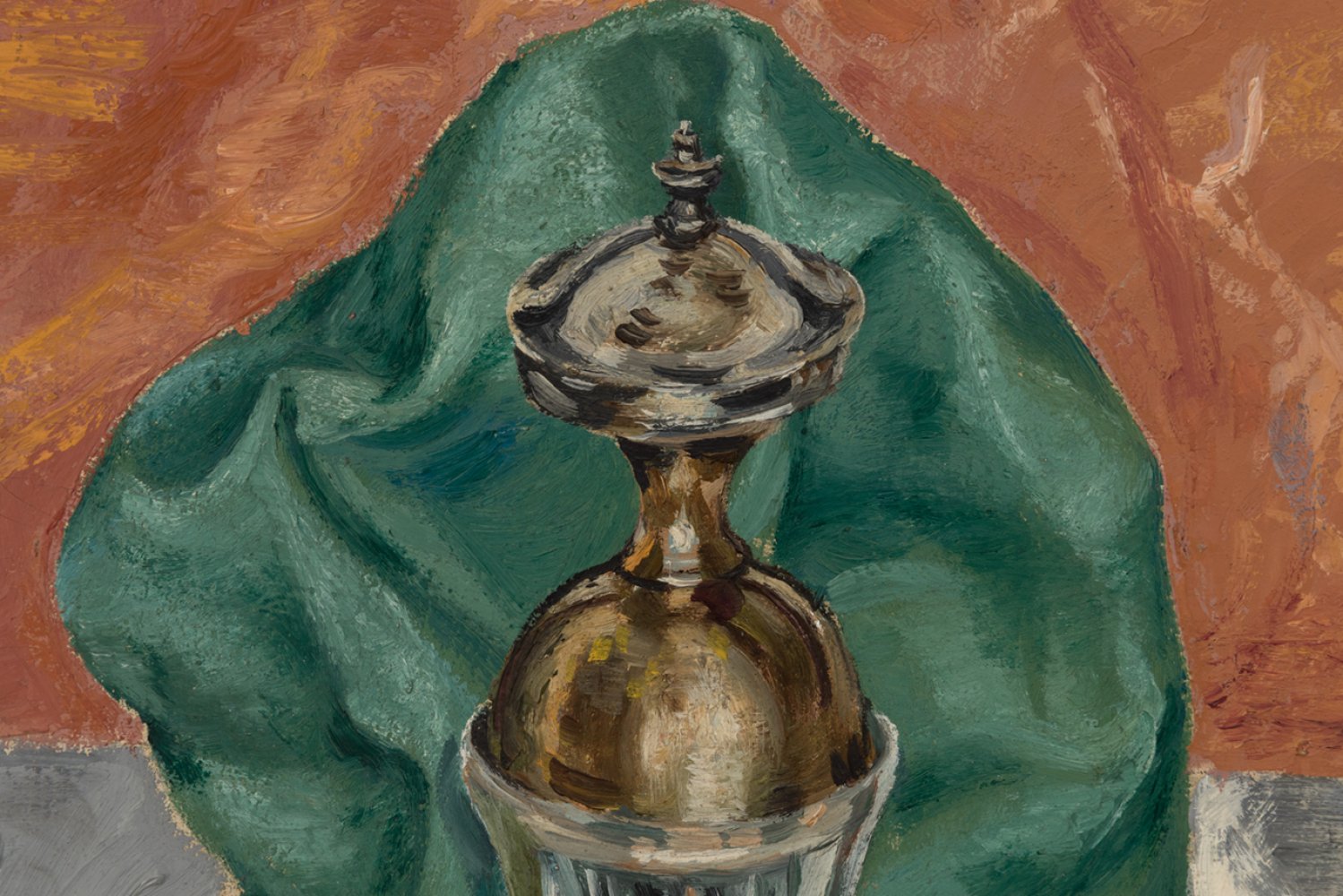45
BENJAMÍN PALENCIA (Barrax, Albacete, 1894 - Madrid, 1980)."Still life", circa 1940.Oil on
"Still life", circa 1940.
Oil on cardboard.
Attached certificate of authenticity issued by the Benjamín Palencia Archive.
Signed in the upper left corner.
Measurements: 66 x 95 m.
Founder of the School of Vallecas together with Alberto Sánchez, sculptor, Benjamín Palencia was one of the most important heirs of the poetics of the Castilian landscape typical of the Generation of '98. When he was only fifteen years old, Palencia left his native town and settled in Madrid to develop his training through his frequent visits to the Prado Museum, since he always rejected the official teachings of the Royal Academy of Fine Arts of San Fernando. In 1925 he took part in the Exhibition of Iberian Artists held at the Retiro Palace in Madrid, and in 1926 he travelled to Paris for the first time. There he met Picasso, Gargallo and Miró and came into contact with the collage technique, which he later applied to his work, incorporating new materials such as sand and ashes. It was during this Parisian stay that Palencia's work took on a surrealist tone, evidenced by an increasingly greater expressive freedom that reached its peak in his mature period. On his return to Madrid he founded the Vallecas School (1927) and made his individual debut at the Museum of Modern Art (1928). Palencia gradually abandoned still lifes to return to the Castilian landscape, capturing it through a magnificent synthesis of tradition and the avant-garde. This personal aesthetic of landscape painting reached its culmination in the Vallecas School and, after a brilliant surrealist incursion in the early 1930s, when the Civil War broke out Palencia remained in Madrid and, like his fellow artists of his generation, suffered a period of profound crisis. When the war ended, between 1939 and 1940 his painting took a radical turn; he abandoned cubist and abstract influences and even aspects of a surrealist nature in search of an art with a strong chromatic impact, linked to Fauvism. Focusing on his work as a landscape painter, in 1942 Palencia took up again the experience of the Vallecas School together with the young painters Álvar Delgado, Carlos Pascual de Lara, Gregorio del Olmo, Enrique Núñez Casteló and Francisco San José. His work would include images of the Castilian countryside and its peasants and animals; his painting became a testimony to the rough, the coarse and the rural, to the subtle expressiveness of Castilian sobriety. Now fully consolidated, in 1943 he won the first medal at the National Exhibition of Fine Arts and in 1944 he was selected to take part in the Salón de los Once de Eugenio D'Ors in Madrid. The following year he was awarded the medal of honour at the National Exhibition, although he gave it up in order to facilitate its award to José Gutiérrez Solana, who died a few days before the jury's decision. From this decade onwards he exhibited his work in art centres and galleries such as the Círculo de Bellas Artes in Madrid and the Estilo gallery, and in 1946 he was once again selected for the Salón de los Once. He also began to take part in international exhibitions, such as those of Spanish Contemporary Art held in 1947 in Buenos Aires, Rio de Janeiro and São Paulo. He was also awarded the Grand Prize at the Hispano-American Biennial in Madrid (1951) and exhibited at the Museum of Modern Art in Paris (1951), the Venice Biennial (1956), the Princess of Paravinci's Palace in Rome (1965), etc. In 1973 he was made a member of the Royal Academy of Fine Arts of San Fernando, and in 1978 he joined the Academy of San Jorge in Barcelona. That same year he was awarded the Gold Medal for Merit in Fine Arts. Benjamín Palencia is currently represented in the Reina Sofía National Museum, the Patio Herreriano in Valladolid and the Fine Arts Museums of Valencia and Albacete, among many others.
"Still life", circa 1940.
Oil on cardboard.
Attached certificate of authenticity issued by the Benjamín Palencia Archive.
Signed in the upper left corner.
Measurements: 66 x 95 m.
Founder of the School of Vallecas together with Alberto Sánchez, sculptor, Benjamín Palencia was one of the most important heirs of the poetics of the Castilian landscape typical of the Generation of '98. When he was only fifteen years old, Palencia left his native town and settled in Madrid to develop his training through his frequent visits to the Prado Museum, since he always rejected the official teachings of the Royal Academy of Fine Arts of San Fernando. In 1925 he took part in the Exhibition of Iberian Artists held at the Retiro Palace in Madrid, and in 1926 he travelled to Paris for the first time. There he met Picasso, Gargallo and Miró and came into contact with the collage technique, which he later applied to his work, incorporating new materials such as sand and ashes. It was during this Parisian stay that Palencia's work took on a surrealist tone, evidenced by an increasingly greater expressive freedom that reached its peak in his mature period. On his return to Madrid he founded the Vallecas School (1927) and made his individual debut at the Museum of Modern Art (1928). Palencia gradually abandoned still lifes to return to the Castilian landscape, capturing it through a magnificent synthesis of tradition and the avant-garde. This personal aesthetic of landscape painting reached its culmination in the Vallecas School and, after a brilliant surrealist incursion in the early 1930s, when the Civil War broke out Palencia remained in Madrid and, like his fellow artists of his generation, suffered a period of profound crisis. When the war ended, between 1939 and 1940 his painting took a radical turn; he abandoned cubist and abstract influences and even aspects of a surrealist nature in search of an art with a strong chromatic impact, linked to Fauvism. Focusing on his work as a landscape painter, in 1942 Palencia took up again the experience of the Vallecas School together with the young painters Álvar Delgado, Carlos Pascual de Lara, Gregorio del Olmo, Enrique Núñez Casteló and Francisco San José. His work would include images of the Castilian countryside and its peasants and animals; his painting became a testimony to the rough, the coarse and the rural, to the subtle expressiveness of Castilian sobriety. Now fully consolidated, in 1943 he won the first medal at the National Exhibition of Fine Arts and in 1944 he was selected to take part in the Salón de los Once de Eugenio D'Ors in Madrid. The following year he was awarded the medal of honour at the National Exhibition, although he gave it up in order to facilitate its award to José Gutiérrez Solana, who died a few days before the jury's decision. From this decade onwards he exhibited his work in art centres and galleries such as the Círculo de Bellas Artes in Madrid and the Estilo gallery, and in 1946 he was once again selected for the Salón de los Once. He also began to take part in international exhibitions, such as those of Spanish Contemporary Art held in 1947 in Buenos Aires, Rio de Janeiro and São Paulo. He was also awarded the Grand Prize at the Hispano-American Biennial in Madrid (1951) and exhibited at the Museum of Modern Art in Paris (1951), the Venice Biennial (1956), the Princess of Paravinci's Palace in Rome (1965), etc. In 1973 he was made a member of the Royal Academy of Fine Arts of San Fernando, and in 1978 he joined the Academy of San Jorge in Barcelona. That same year he was awarded the Gold Medal for Merit in Fine Arts. Benjamín Palencia is currently represented in the Reina Sofía National Museum, the Patio Herreriano in Valladolid and the Fine Arts Museums of Valencia and Albacete, among many others.
27th October - Contemporary & Actual Art
Sale Date(s)
Venue Address
General delivery information available from the auctioneer
Setdart offers Worldwide shipping
PICK UP IN ROOM: You can come and pick up your lots in our offices (Barcelona, Madrid or Valencia). At the moment of the withdrawal, you will be able to accept the current conditions of the lot by means of a document that you will sign.
YOU CAN SEND ANOTHER PERSON TO PICK UP: This person must present a signed authorization that you can find in our web page by accessing from BUY AT SETDART- LOGISTICS-DOWNLOAD AUTHORIZATION DOCUMENT. You can also send an e-mail with the requested data in AUTHORIZATION DOCUMENT to admin@setdart.com
Important Information
25% buyer´s premium
21% buyer´s premium at www.setdart.com
Terms & Conditions
The maximum period to pay the lots is 7 working days. You can pay either via bank transfer or with credit card through our platform www.setdart.com (we only accept VISA or Mastercard).
BUYER´S PREMIUM: 22% Hammer price + 21% VAT from the buyer´s premium
If your piece has more than 100 years, our Ministry of Culture requires an export certificate in order for the piece to leave the country. Note that if the piece goes inside the EU, there is no cost for the export certificate. If the piece goes outside the EU, there is a cost for the export certificate. You can find more information in our Ministry of Culture website: https://www.culturaydeporte.gob.es/en/cultura/patrimonio/exportacionimportacion/exportacion/tasas.html
INQUIRIES: admin@setdart.com
Setdart guides you through the entire process, from the time of award to the day you receive your lot. Our logistics team will be happy to manage your transport, and will advise you on the best shipping method with professionals from the sector used to handling works of art and jewelry.
WE OFFER WORLDWIDE DOOR TO DOOR SHIPPING
PICK UP IN ROOM: You can come and pick up your lots in our offices. At the moment of the withdrawal, you will be able to accept the current conditions of the lot by means of a document that you will sign.
YOU CAN SEND ANOTHER PERSON TO PICK UP: This person must present a signed authorization that you can find in our web page by accessing from BUY AT SETDART-LOGISTICS-DOWNLOAD AUTHORIZATION DOCUMENT. You can also send an e-mail with the requested data in AUTHORIZATION DOCUMENT to admin@setdart.com
SETDART IS NOT RESPONSIBLE FOR THE STATE OF THE PARTS ONCE THEY LEAVE OUR FACILITIES. MRW SHIPMENTS: Once the payment is made, your lot will be packed for shipment, the logistics department will send you an e-mail notifying you of the day it leaves our warehouse, changes of address cannot be made after receiving this e-mail.
INSURANCE INCIDENTS: Coverage for the value of the auction up to 3000 ? per shipment, if the value of the auction is higher, Setdart will send you a quote including the additional insurance. The insurance company WILL NOT BE RESPONSIBLE FOR THE SHIPMENT THAT EXCEEDS THAT AMOUNT AND IS NOT FULLY INSURED. MRW INCIDENTS: Maximum notification 48 hours after receipt, after which the insurance company WILL NOT BE RESPONSIBLE AND NO CLAIMS WILL BE ACCEPTED.
E-MAIL LOGISTICS: logistica@setdart.com
PICK UP YOUR MESSAGES: You can send your own messaging, prior notice via e-mail that your shipment is ready, please note 3 or 4 days in advance. This type of shipment is packaged so Setdart will provide you with a quote.
EXPENSES FOR STORAGE: We inform you that if the purchased lot is not picked up within a month, you will be charged 30€ per week per lot. Setdart Online S.L., owner of the web site "setdart.com", "setdart.net" and "setdart.org", acts as a company of Spanish nationality inscribed in the Volume 36955, sheet 182, page B-293056 of the Mercantile Registry, with registered office at Calle Aragó


















